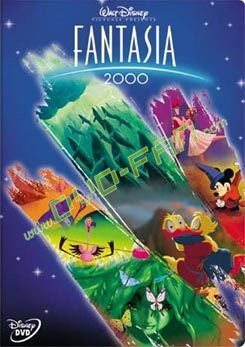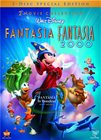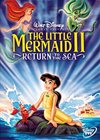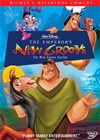About Fantasia (2000)
Fantasia dvd wholesale for canada amazon resellers. The plan for the original Fantasia movie was for it to be a kind of permanently running show, periodically adding new episodes while others would be rotated out. However, the film's failure to achieve success at the box office, combined with the loss of the European market due to World War II, meant that the plan went unused. Accordingly, Fantasia 2000 implemented this idea by retaining the sequence with Mickey Mouse as the sorcerer's apprentice, arguably the most popular segment from the original film.
Composer André Previn reports in his book No Minor Chords that he was approached by Disney to work on as a sequel to Fantasia. He declined the project when he learned that the soundtrack was, at that point, conceived of as an orchestration of Beatles songs.
Development for Fantasia 2000 began in 1990, and production began the following year. The music selections were made as a collective decision by Roy E. Disney, James Levine, and members of the production staff. Most were decisions driven by the musical preferences of the team; Roy personally chose the Pines of Rome. Other pieces were discovered long after the story ideas were set, such as the Steadfast Tin Soldier, where the visuals were based on artwork done for the original Fantasia, but the Shostakovich piece was presented to the team by an animator relatively late into the production schedule.
Fantasia 2000 was originally scheduled for a release in the mid 1990s with the name Fantasia Continued; it was later renamed Fantasia 1999 until the release date was moved into 2000. In order to tie Fantasia 2000 to the original idea of a rotating program, three sections from the original Fantasia were intended to remain in Fantasia 2000. However, only The Sorcerer's Apprentice made it into the final release. The late addition of Rhapsody in Blue replaced Dance of the Hours a year before release, and the Nutcracker Suite was a part of Fantasia 2000 until a few months before it reached theaters. After several test screenings and after much of the publicity material had already been produced, the Nutcracker Suite was removed to shorten the running time of the movie.
Rhapsody in Blue was a work already in progress by director Eric Goldberg (lead animator for the Genie in Aladdin, also inspired by Al Hirschfeld's art), when Disney approached him to complete the piece for the movie. This decision was ideal given the head start on the work and so that the film could include a work from an American composer. Taking on Rhapsody in Blue also allowed Disney to keep the animators assigned to their feature Kingdom of the Sun (later released as The Emperor's New Groove) busy while Kingdom went through an extensive rewrite. Some press articles written after the completion of Groove reversed the roles, saying that Goldberg first approached Disney for Rhapsody for Fantasia 2000 and was initially rejected, and later the producers came back to him as a result of the need find something to do with the animation staff while the Kingdom rewrite was going on.
One significant difference in the musical styles between the films is that in Fantasia 2000 the piano features prominently in more than half of the selections, while the original Fantasia did not have a piano in any segment.
Fantasia 2000 features many technical innovations that would later be utilized in the Disney studio's other animation works, particularly in the use of computers. Both Pines of Rome and The Steadfast Tin Soldier were primarily CGI pieces, completed before Pixar's landmark film Toy Story was released. The horns on the elk in The Firebird were CGI-rendered on top of hand-drawn animation (giving them a higher consistency, when compared to Bambi which was all drawn by hand), a technique that would be used in Treasure Planet for the character Silver.
The producers felt that some break between the musical segments was necessary to "cleanse the palate", so a series of "interstitials" were directed by Disney animation producer Don Hahn. Instead of using a single narrator as in Fantasia, the individual pieces are introduced by people from different areas of the art world. After the film opens with Beethoven's Fifth, Steve Martin discusses the history of Fantasia being a continuing concept and is immediately followed by Itzhak Perlman, who introduces Pines of Rome. Quincy Jones leads into the Gershwin number, and Bette Midler gives an introduction to the Shostakovich concerto, both featuring on screen the piano players for the respective pieces. James Earl Jones introduces Carnival of the Animals with director Eric Goldberg, and, appropriately enough, magicians Penn and Teller make an appearance before The Sorcerer's Apprentice. When this piece concludes with Mickey Mouse's conversation with conductor Leopold Stokowski from the original Fantasia, Mickey then moves on to chat with Levine before the latter introduces Pomp and Circumstance. The final sequence of The Firebird is introduced by Angela Lansbury.












